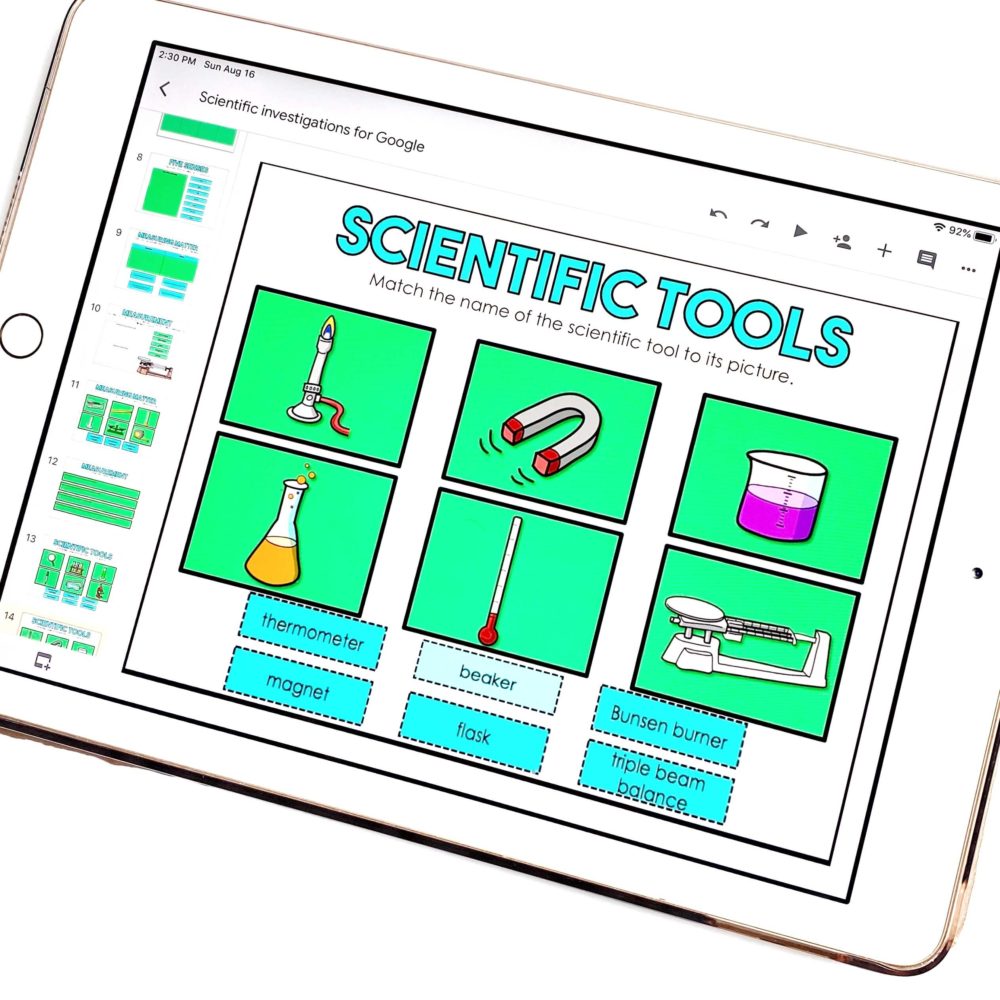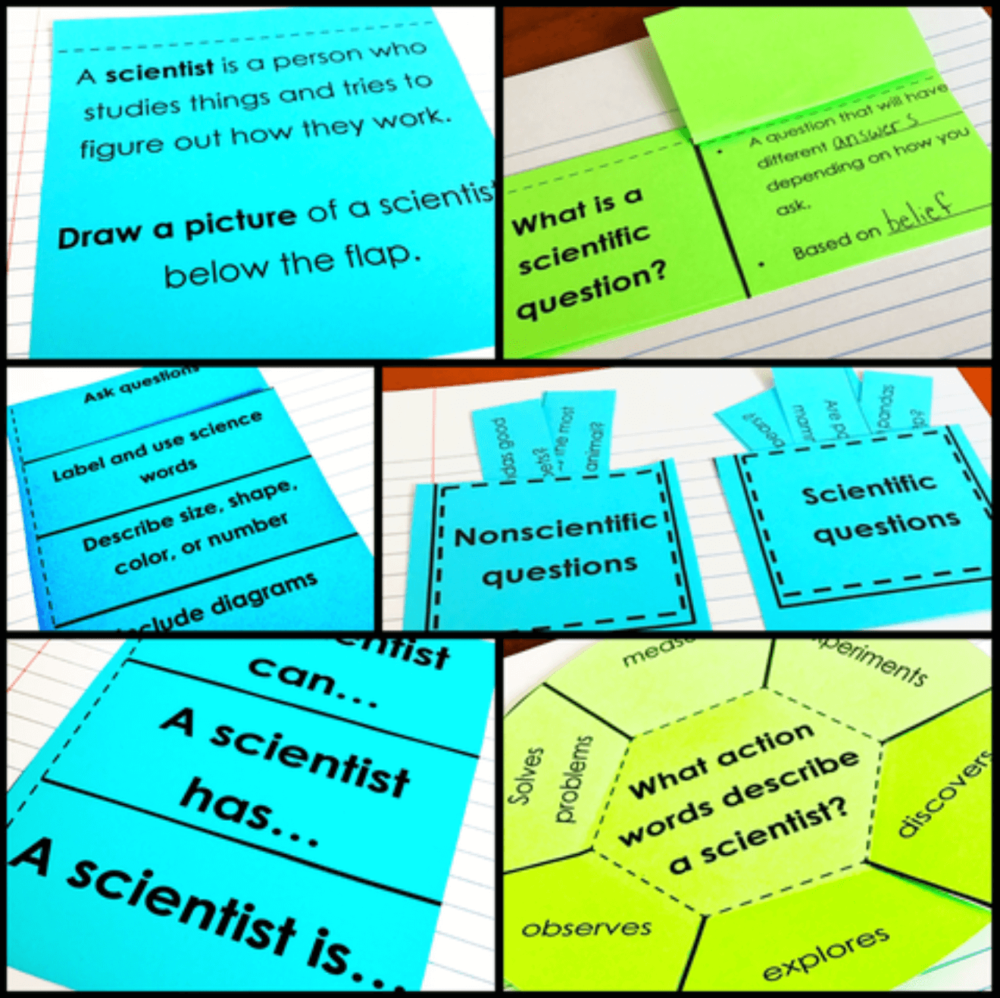Join the VIP Teacher Club!

Need scientific method activities?
Science is FUN!
Seeing the joy in your students’ faces when they bring an idea to life or watching them focus on finding a resolution to a problem they’ve been challenged with is so rewarding!
The curiosity and enthusiasm that science brings to the classroom are irreplaceable, but there are some things that I really believe have to be taught with lots of structure and organization in order for students to get the most out of their learning!
We’re so fortunate to have the scientific method to help create an environment that thrives off of trial and error and places a lot of importance on multiple perspectives, but in order to build problem solvers that are resilient, your students have to know the scientific method very specifically to stay focused and determined!
I have a couple of resources to share with you that will help you teach the scientific method, a unit introduction idea, and read alouds that will help incorporate real-life skills!
Building problem solvers in your classroom take time, but you won’t regret taking the time to instill the scientific method in your students! 🙂

Honestly, my favorite way to introduce the scientific method for the very first time is quite possibly the simplest way. 😉
This activity is such a natural way to introduce this unit without even needing to explain what the scientific method is at first!
Have a paper plane already made before starting your lesson.
Tell your students you’ve been working on figuring out how to make the farthest traveling plane.
You can then ask them how far they think the one you’ve made will go and why.
What do they think will hold it back? What do they think will help it? 🙂
Test the plane and analyze how far it went – what needs to be changed to make it fly farther? Try again!
Once you’ve found a style that goes the farthest compared to the others, you can explain the process that you used to test the plane and make the alterations that were needed in order to solve the problem.
I would always emphasize how many attempts it took to find the best build of the plane and correlate those many attempts to how scientists feel while solving a problem they’re working on, too.
It sounds super simple, but I’ve found that introducing the scientific method for the very first time goes so much smoother when you can let kids be kids and allow their curiosity, enthusiasm, and natural problem-solving skills to take over first, compared to structuring their thinking right away!

After you’ve introduced the concept, I think it’s really important to then practice using the method with intention and extra resources!
This Google Classroom resource places a lot of emphasis on scientific terms, topics, and conducting investigations!
It covers vocabulary and understanding the use of scientific tools, plenty of short answer questions that discuss what scientists do, and lots of drag-and-drop questions that focus on science-related topics such as the five senses, volume and matter, measuring distance and mass, independent and dependent variables, and understanding the difference between qualitative and quantitative data.

I have also included a “Create-Your-Own” activity in this resource that allows you to conduct your own experiment using the scientific method.
I believe the best way to come up with fun experiments to conduct to get your students using the scientific method is to ask your students what they want to learn more about!
Start by getting them to ask questions – What is the perfect amount of sunlight for a plant to grow indoors? How many drops of water will a penny hold? What kind of paper plane can fly the farthest?
You can always have a discussion with your students about what question they’d like to solve using the scientific method, or prepare questions beforehand for them to vote on!
To learn more about this Google Classroom resource, you can find it here!

This interactive notebook is perfect for digging deep into using the scientific method!
It includes flipbooks for discussing the difference between independent and dependent variables, how to write a good hypothesis, the six specific steps of the scientific method, and another flapbook to use for your own experiment!
My favorite thing about this notebook is how much emphasis is placed on understanding each step of the scientific method.
We tend to use words like observation, hypothesis or analyze, but don’t always discuss these concepts in-depth enough with our students, but just go right into using them instead. 🙂

It comes with 3 different levels of modifications so you can meet your students exactly where they are to help them use the scientific method!
These flipbooks definitely help guide those discussions and will clear up any confusion your kids may have on these steps.
Building problem solvers requires a firm understanding of what takes place at each step!
You can find this interactive notebook by clicking here!


I love helping teachers find ways to teach topics that incorporate real life skills.
Read-alouds are one of the best ways to incorporate science-related topics and make them relatable and intriguing!
Here are a few of my favorites: (Amazon Affiliate links below!)
Looking for more picture book ideas in content areas that you least expect? Check out my blog post on picture books in the math class – click here to read!
Even if it doesn’t incorporate the scientific method directly, think about some of your favorite stories and how they could be applied to using the scientific method!
Building problem solvers means being able to solve all sorts of challenges that we face.
It’s so important to highlight the significance of having an open mind, persevering, and thinking critically.
I hope your students enjoy these resources and become pros at using the scientific method! 🙂


Hey there, I’m Kelly! I I love helping teachers save time with technology and resources so they have more hours in the day to spend with family and friends. Take a look around to find new ideas that you can implement in your classroom today!